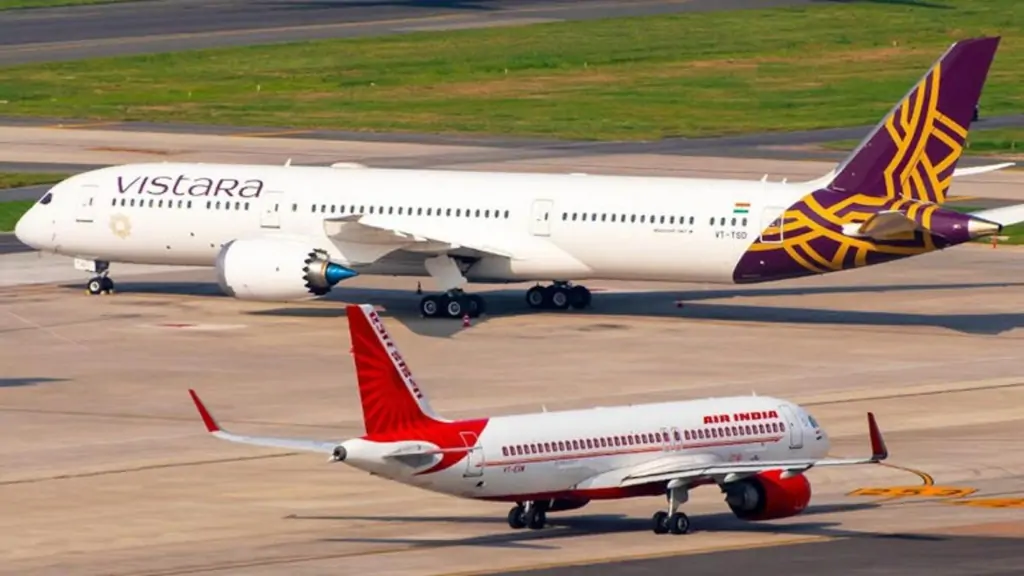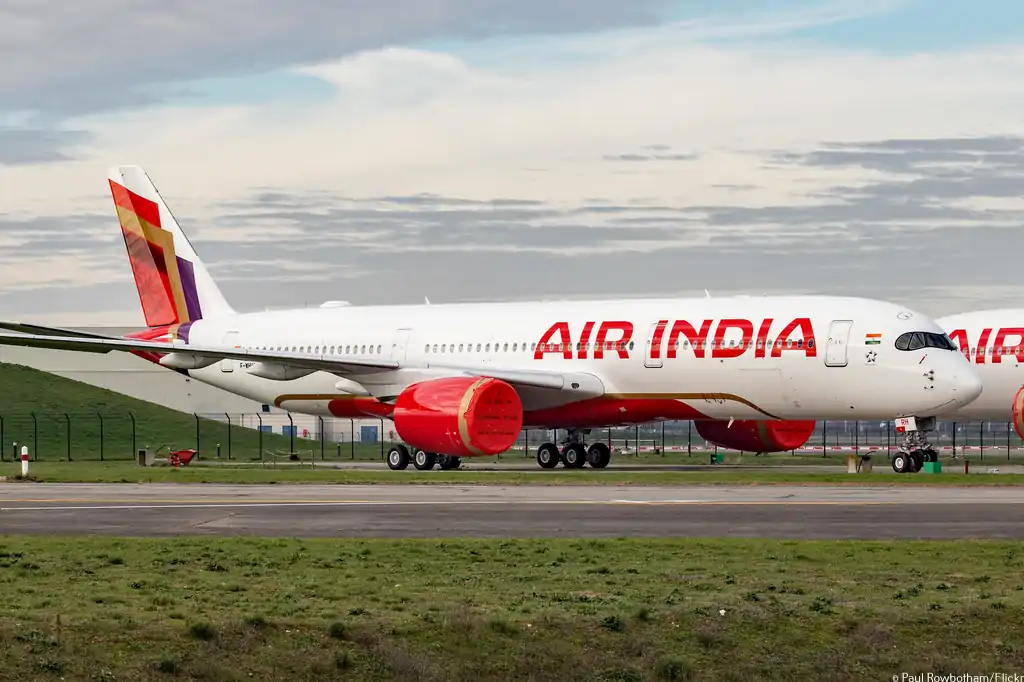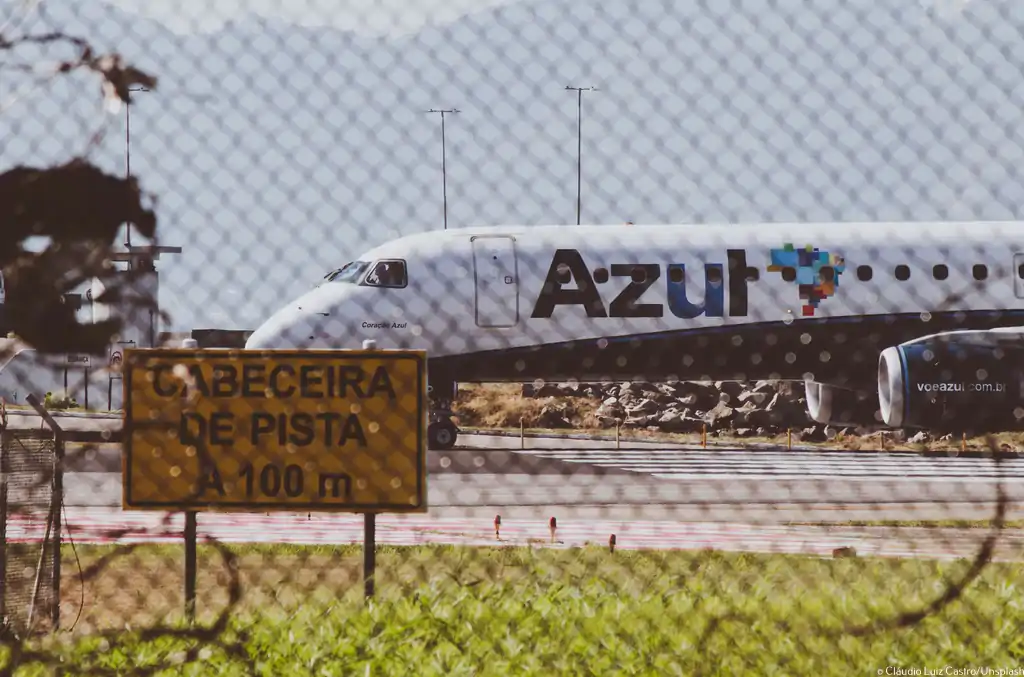IndiGo founder-promoter Rahul Bhatia’s firm InterGlobe Enterprises (IGE), and C P Gurnani, former Tech Mahindra CEO and now Assago Group chairman, have launched AIonOS - an AI business venture.
Unveiling AIonOS:
This venture aims to propel business transformation through advanced AI technologies with an initial focus on travel-related businesses.
“Starting with the travel, transportation, logistics, and hospitality (TTLH) sector, AIonOS has onboarded several businesses from these verticals as launch customers. This sector alone presents a significant opportunity for AI-driven innovation…. The mission of AIonOS is to empower businesses with advanced AI solutions that not only streamline workflows but also elevate customer experience. AIonOS will redefine the way businesses operate in the digital age. Its products & services serving as a link between a company’s data, its analytical capabilities and operational execution,” a statement announcing the launch said.
Rahul Bhatia said: “InterGlobe has always been at the forefront of innovation and development, and I am delighted that we at InterGlobe are partnering with C.P. on this path-breaking venture. In a rapidly transforming world, it is crucial for businesses to expand their scope and harness the potential of AI. AIonOS is aimed at enabling businesses to accelerate their digital transformation by enhancing human and system capabilities with AI powered solutions. By leveraging our deep sectoral expertise and the power of AI, we aim to revolutionise industries, redefine possibilities, and shape the future of businesses.”
C P Gurnani, executive vice chairman of AIonOS, said: “At AIonOS, we are redefining industry standards with IntelliOS, our AI native platform that enables organisations to initiate their transformation towards cognitive enterprises. We are building SaaS solutions that integrate seamlessly into the fabric of industries such as travel, transport, logistics and hospitality. The first set of use cases include unlocking higher revenue through smarter pricing and delivering superior customer experience. Our approach to AI combines sophisticated technology with the nuances of human interaction in every solution we deliver."
Read next
Airlines will now have to ensure that children are seated next to their parents when they fly.
The DGCA has mandated airlines to allocate seats for children of up to 12 years of age with at least one of their parents or guardians on flights travelling on the same PNR (booking reference number).
Also, airlines cannot charge parents/guardians anything extra for seat selection if travelling on the same PNR and they have to maintain a record of the same.
Airlines have been forcing people to pay for seat selection and if they do not pay families end up sitting all around the plane.
“The existing Air Transport Circular 01 of 2021 has been suitably modified to incorporate with a view to alleviate any such situation in future,” the DGCA said in a release.
The DGCA further mentioned that it has revised the Air Transport Circular (ATC)-01 of 2024 titled, “Unbundle of Services and Fees by scheduled airlines”. As per the circular, some services like Zero Baggage, Preferential seating, Meals/Snack/Drink charges, charges for carriage of musical Instruments, etc. have been allowed.
“Such unbundled services are provided on “opt-in” basis by airlines and are not mandatory in nature. There is also a provision for auto seat assignment to the passengers who have not selected any seat for web check-in before scheduled departure,” the release by the DGCA stated.
Even the US is facing similar problems.
US President Joe Biden had on Feb 5, 2023, said on X: "Some airlines charge extra to pick your seat, including for parents who want to sit next to their child on a plane. Congress should pass the Junk Fee Protection Act so we can crack down on these fees and give hard-working Americans just a little bit more breathing room."
Then on March 1, 2023, US department of transport secretary tweeted: "Next week, (the department) will publish a family seating dashboard to show which airlines guarantee families can sit together for free."
Read next
Tata group-owned Air India and Vistara are targeting to merge by October, according to Business Line.
The two airlines have sought Directorate General of Civil Aviation (DGCA) views on “crossover training requirements for pilots and crew”. Both have different manuals and procedures.
When pilots switch jobs they typically undergo training to familiarise themselves with the procedures of the new organisation. “Discussion is on with DGCA on the issue of crossover training and if the training period can be shortened. Training the entire set of pilots and crew will require lot of time and will impact schedules,” a person familiar with the matter told the paper.
The two are also waiting for NCLT nod.
One of the key areas to manage carefully will be “migration of Vistara issued ticket passenger name records with those with Air India” and “to minimise the migration hassle, ticket sales on dates beyond actual merger could be stopped on Vistara reservations system” so these flights would be open for sale on Air India systems” which could start two-three months before merger.
The Tata Group in late 2022 today announced the consolidation of its airlines, Vistara and Air India. Vistara is to be merged with Air India post receipt of requisite approvals. As part of the merger transaction, Singapore Airlines shall also invest Rs 2,059 crore in Air India. Post the consolidation, SIA shall hold 25.1% shareholding in Air India.
The transaction was estimated to be completed by March 2024.
N Chandrasekaran, Chairman, Tata Sons had said: "The merger of Vistara and Air India is an important milestone in our journey to make Air India a truly world-class airline. We are transforming Air India, with the aim of providing great customer experience, every time, for every customer. As part of the transformation, Air India is focusing on growing both its network and fleet, revamping its customer proposition, enhancing safety, reliability, and on-time performance. We are excited with the opportunity of creating a strong Air India which would offer both full-service and low-cost service across domestic and international routes. We would like to thank Singapore Airlines for their continued partnership.”
Goh Choon Phong, Chief Executive Officer, Singapore Airlines, had said: “Tata Sons is one of the most established and respected names in India. Our collaboration to set up Vistara in 2013 resulted in a market-leading full-service carrier, which has won many global accolades in a short time. With this merger, we have an opportunity to deepen our relationship with Tata and participate directly in an exciting new growth phase in India’s aviation market. We will work together to support Air India’s transformation program, unlock its significant potential, and restore it to its position as a leading airline on the global stage.”
In March this year, the Competition and Consumer Commission of Singapore (CCCS) gave Conditional Approval to the merger of Vistara with Air India and for the SIA group to have a 25.1% stake in the merged entity.
Read next
Air India, the flag carrier of India, is set to mark a significant milestone in its aviation journey with the launch of scheduled international A350-900 flights from May 1. This move marks a pivotal moment not only for the airline but also for the Indian aviation industry as a whole.
A350 Fleet Expansion
Earlier this year, Air India embarked on the induction of the Airbus A350-900 into its fleet, signaling a strategic shift towards modernizing its aircraft lineup. Currently operating three active A350s, with a fourth recently delivered, the airline has predominantly utilized these state-of-the-art aircraft on domestic routes within India.
Domestic Operations and Cabin Configuration
Air India's A350s have been serving key domestic routes, linking major cities such as Bengaluru, Chennai, Delhi, Hyderabad, and Mumbai. The cabin configuration of these aircraft reflects a commitment to passenger comfort and luxury, featuring 28 business seats, 24 premium economy seats, and 264 economy seats.
International Expansion and Fleet Upgrade Strategy
With the imminent launch of scheduled international A350 flights between Delhi International and Dubai International, Air India is poised to extend its reach beyond domestic borders. This strategic route choice underscores the airline's focus on connecting key business and leisure destinations in the region.
The introduction of the A350 fleet is part of a broader fleet upgrade initiative at Air India. In addition to the existing and forthcoming A350s, the airline has a substantial order book, including 20 A350-1000s, signaling its long-term commitment to modernization and expansion.
Future Prospects and Expectations
While the specific international routes beyond Delhi-Dubai have yet to be announced, Air India's ambitious fleet expansion plans indicate a promising trajectory for the airline. With 16 more A350-900s in the pipeline, alongside the A350-1000s, Air India is poised to further enhance its global connectivity and passenger experience.
Conclusion
As Air India prepares to embark on its maiden international A350 flight, the aviation industry eagerly anticipates the transformative impact of this milestone. With a modern fleet, strategic route expansion, and a commitment to passenger-centric service, Air India is well-positioned to assert its presence on the global stage and solidify its status as a leading player in Indian aviation.
With Inputs from ch-aviation
Read next
As the aviation industry navigates through the turbulence caused by the COVID-19 pandemic, strategic alliances and mergers have become a focal point for airlines seeking stability and growth. Recent reports from Bloomberg suggest that talks between Azul Linhas Aereas Brasileiras and GOL Linhas Aereas Inteligentes regarding a potential merger are gaining momentum, potentially reshaping Brazil's aviation landscape.
Exploring the Merger Talks and Strategic Moves by Azul
According to sources familiar with the matter, Azul is contemplating a scenario wherein Abra Group, the owner of GOL and Avianca airlines, could contribute its GOL shares to Azul in exchange for a stake in the combined carrier. This proposition comes at a crucial time for GOL, which is currently undergoing Chapter 11 bankruptcy restructuring, prompting the airline to actively evaluate various capitalization alternatives.
Azul has been proactively pursuing a merger proposal, enlisting the expertise of financial giants such as Citigroup and Guggenheim Partners. This strategic move underscores Azul's ambition to consolidate its position in the Brazilian aviation market and capitalize on potential synergies that a merger could bring.
Regulatory Considerations and Fleet and Expansion Plans
While optimism abounds within Azul regarding gaining regulatory approval from Brazilian and regional antitrust regulators, the merger proposal faces scrutiny over potential monopolistic concerns. If approved, the merger would pave the way for the creation of Brazil's largest airline, boasting a combined fleet of 329 aircraft.
GOL's current fleet comprises 139 jets, including a mix of Boeing 737 models. Additionally, the airline has 86 planes on order from Boeing, indicating its commitment to fleet modernization and expansion. However, GOL's Chapter 11 process involves negotiations for the return of some older airframes to lessors, a move aimed at streamlining its operations and optimizing its fleet composition.
Implications for the Industry and Conclusion
The potential merger between Azul and GOL carries significant implications for the Brazilian aviation industry. Beyond creating a dominant player in the market, it could lead to enhanced route networks, improved operational efficiency, and increased competitiveness against international carriers.
As discussions between Azul and GOL gather momentum, the prospect of a merger looms large over Brazil's aviation sector. While uncertainties remain regarding regulatory approval and the finer details of the deal, the potential synergies and benefits it could bring signal a transformative shift in the country's airline industry landscape. Time will tell whether this ambitious merger will take flight and propel Brazil's aviation sector to new heights.
With Inputs from ch-aviation
Read next
Boeing Faces Production Challenges Amid Supply Shortages and Quality Concerns
Abhishek Nayar
24 Apr 2024

Boeing, one of the world's leading aerospace manufacturers, is encountering obstacles in ramping up production of its 787 widebody jets due to supplier shortages and quality concerns. These challenges come amidst a broader context of supply chain disruptions affecting the aviation industry.
Production Rate Adjustments and FAA Involvement
According to a memo from Scott Stocker, vice president and general manager of the 787 program, Boeing is anticipating a slower increase in the production rate and deliveries of its 787 jets. The company attributes this adjustment to shortages of "key parts" from suppliers. Despite this setback, Boeing remains committed to meeting strong demand for its aircraft.
The Federal Aviation Administration (FAA) is closely monitoring Boeing's situation and is in communication with the company regarding the challenges it faces in obtaining certain parts. While emphasizing the importance of safety and compliance, the FAA reassures that it retains the authority to issue airworthiness certificates for all Boeing 787s.
Quality Concerns and Scrutiny
Boeing's manufacturing practices have come under scrutiny, particularly in light of recent revelations made by company engineer Sam Salehpour. Salehpour's testimony at a U.S. Senate hearing raised concerns about Boeing's failure to adequately shim certain components of the 787 Dreamliner, which could lead to premature fatigue failure over time. Boeing, however, asserts that there have been no findings of fatigue on its older 787 jets.
737 MAX Production and Industry-wide Challenges
In addition to issues with the 787 program, Boeing's production of the 737 MAX single-aisle jet in Washington state has also faced setbacks. Increased scrutiny from regulators and a need to address outstanding work have led to a sharp decline in production rates. This comes after a mid-air panel blowout incident on a near-new 737 MAX 9 earlier in the year, raising questions about Boeing's safety culture and manufacturing quality.
Boeing's difficulties are not isolated, as other planemakers are also grappling with shortages of parts and labor due to supply chain disruptions. Delays in deliveries to airlines have become a common concern across the industry, highlighting the broader impact of global supply chain snags.
Conclusion
Boeing's struggles with production rate adjustments, supplier shortages, and quality concerns underscore the complex challenges facing the aviation industry. As the company navigates these obstacles, stakeholders will closely monitor its efforts to ensure safety, compliance, and timely delivery of aircraft to customers.
With Inputs from Reuters







Comment